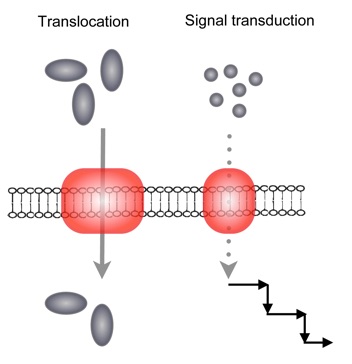
Design and Function of Molecular Machines
What keeps cells and organisms alive are specific functions performed by highly organized macromolecular assemblies. Our research group wants to understand the architectural design and underlying molecular principles of these ‘biological nanomachines’.
We explore such structures under normal and disease-related conditions. Our laboratory uses an integrated approach by combining modern molecular biology, genetic, biochemical, and structural tools.
In particular, we are interested in membrane-associated processes, which are a fundamental characteristic of all living cells. They ensure that individual cells are able to effectively communicate with, and adapt to, their environment. Cells achieve this by either physically translocating molecules to the opposite site of a membrane (translocation) or by receiving, transmitting, and amplifying incoming signals (signal transduction). Our laboratory is interested in understanding the molecular mechanism underlying such processes.
Specifically, we focus on machineries capable of translocating bacterial toxins into eukaryotic cells and use high-resolution three-dimensional electron microscopy to directly visualize such molecular machines in action.

